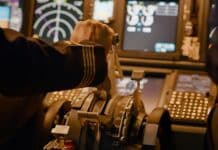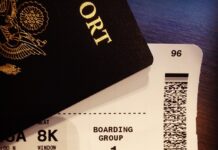There are many things that the occasional passenger may wonder about or that the frequent flyer experiences and observes without having asked himself or found the answer. Among them: how airport runways are numbered.
If you have already landed at Roissy, you may have used runway 26R. What does this number mean:
-26 is the runway number (we’ll see later where it comes from)
– R stands for “right”. Because there can also be a 26L “left”.
Uh, so 26 runways right and left (right and left of what, by the way?) ….. That’s 52 runways? Of course not (or it would create jobs in air traffic control).
The Cartesian logic would logically want them to be numbered from 1 to n to know which one we are talking about. Which, as you may have noticed, is not the case. A track number is not only used to identify it but also to find it.
Runways numbering: a simple matter of orientation
Let’s start from the beginning.
On each runway there are two numbers that indicate to the pilot which runway he should use to land or take off.
The number of the track depends on its orientation with respect to the magnetic north pole, rounded to the nearest ten and in the zero.
Example: Your runway is oriented at 89° to the North Pole. We round up to 90 and remove the zero, so it will be track 9!
But if we take the runway in the other direction, which is possible because the direction of use of the runways depends on the wind direction?
Logically, since a full turn corresponds to 360°, a half turn corresponds to 180°, thus a number difference of 18. If, taken in one direction your track is number 9, in the other it will be…27! (9+18). The distance between the two numbers of a track is therefore always 18.
Our so-called runway 26 at Roissy becomes runway 8 in the other direction. The pilot thus finds his orientation and the direction in which to take it.
With an illustration it gets better.
How to distinguish parallel runways?
Then it happens that several runways are parallel. Or, as at Roissy, that they operate in “doublet”. If I have two runways 26 in front of me when I land, which one should I choose? Well, the one on the right will be called 26 right (26R) and the one on the left will be 26 left (26L).
When you take the track in the other direction, the left one goes to the right and vice versa. So your 26 right (26R) becomes 8 left (8L) and vice versa.
And when there are more than 2 parallel tracks? Well, if there are 3 of them, we call the one in the middle center (C). In this case you would have in our example from left to right: 26L/26C/26R.
If there are more than 3, you have to be a little tricky. Atlanta has 5 runways oriented at 274 degrees. They called them 26L and 26R, 27L and 27R, 28. Not orthodox but the best possible representation of reality.
Simple, isn’t it?
With a map of Atlanta as a bonus.
Track numbers change over time
Well, there’s one more thing to know. The magnetic north pole moves in time so imagine the impact it can have on air travel. So the track numbers are “recalibrated” every 5 years.
Photo : runways by ID1974, runway numbers by Nickolay Grigoriev via Shutterstock

















